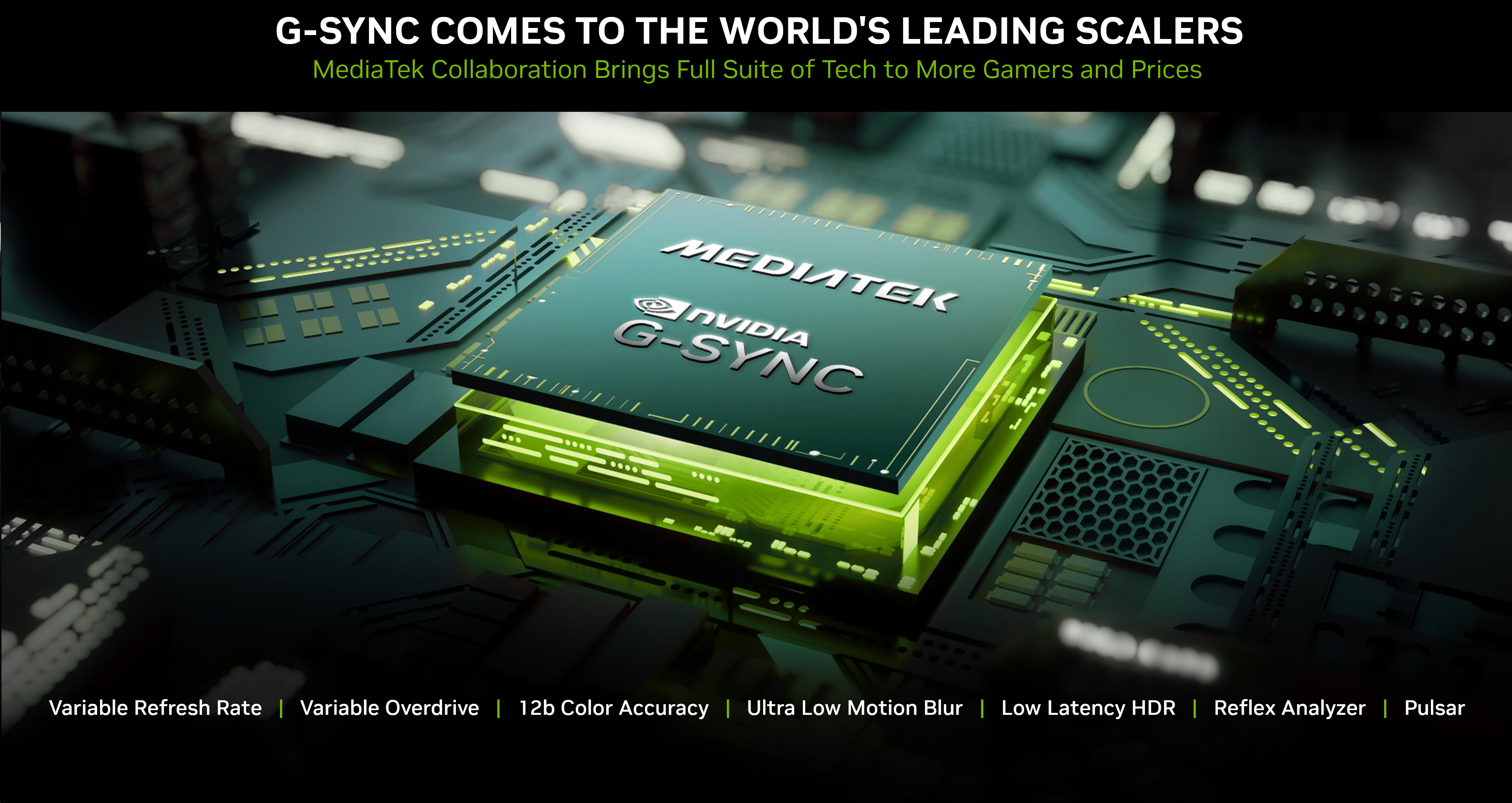

Nvidia first introduced G-Sync variable refresh rate (VRR) technology back in 2013 to eliminate screen tearing, stutter, and input lag in games. This basically worked by synchronizing the GPU's output fps to the monitor's refresh rate. Requirements back in the day included a GPU of the likes of a GeForce GTX 650 Ti or higher and a dedicated G-Sync module that is either built-in to the monitor itself or one that could be modded into compatible models.
Today, a good number of high-end desktop and laptop displays come with the proprietary module built in, but at a premium. Nvidia expanded the G-Sync program in 2019 to certify many AMD FreeSync monitors as "G-Sync compatible", although they do lose out on certain features like low latency HDR, ultra-low motion blur, and Reflex analyzer.
However, the advantage with FreeSync is that there is no additional module required as it is basically built into the DisplayPort 1.2 and HDMI 2.1 spec. Besides, FreeSync is royalty-free, which further helped increase its adoption. AMD also has FreeSync Premium and FreeSync Premium Pro standards with more specifications and requirements, including low framerate compensation (LFC).
Now, Nvidia will no longer make these G-Sync modules but will instead use MediaTek scalers and layer the complete G-Sync stack on top of them. MediaTek scalers are commonly used in many displays, so Nvidia hopes that this will allow a further penetration of G-Sync tech across screens of all kinds.
The new MediaTek G-Sync scalers will also feature full support for G-Sync Pulsar that was first announced at CES 2024. G-Sync Pulsar allows for variable frequency strobing to boost motion clarity. Basically, Pulsar modulates display backlight strobing in tune with the game's refresh rate to minimize flickering.
We asked Nvidia about specific MediaTek scalers they can point to and the ARM CPU requirements within the scaler itself. The company said that the MediaTek MT9810 scaler will be among the first that will support the complete G-Sync technology stack but did not comment on the scaler's ARM CPU specs as the technology is still under development.
The company also confirmed that this functionality cannot be simply enabled on existing displays with the MT9810 scaler with a firmware update and will require new hardware.
Apropos to this, Nvidia announced three new 1440p 360 Hz HDR gaming monitors that feature the new MediaTek G-Sync scaler. These include the AOC AGON Pro AG276QSG2, Acer Predator XB273U F5, and the Asus ROG Swift 360 Hz PG27AQNR.
Pricing information for these displays is not available. While the move to using existing scalers should theoretically reduce G-Sync implementation costs, the exact savings for the end customer are anybody's guess at the moment.
Buy the Alienware AW3423DW ultra-wide QD-OLED with Nvidia G-Sync Ultimate on Amazon




The above is the detailed content of Gamescom 2024 | Nvidia G-Sync all set to become cheaper and more pervasive thanks to MediaTek collaboration. For more information, please follow other related articles on the PHP Chinese website!
 How to solve unable to connect to nvidia
How to solve unable to connect to nvidia Solutions to unknown software exception exceptions in computer applications
Solutions to unknown software exception exceptions in computer applications InvocationTargetException exception handling
InvocationTargetException exception handling How to set offline status on Douyin
How to set offline status on Douyin How to type the less than or equal symbol in Windows
How to type the less than or equal symbol in Windows Else usage in Python loop structure
Else usage in Python loop structure Solution to Connection reset
Solution to Connection reset ie shortcut cannot be deleted
ie shortcut cannot be deleted



